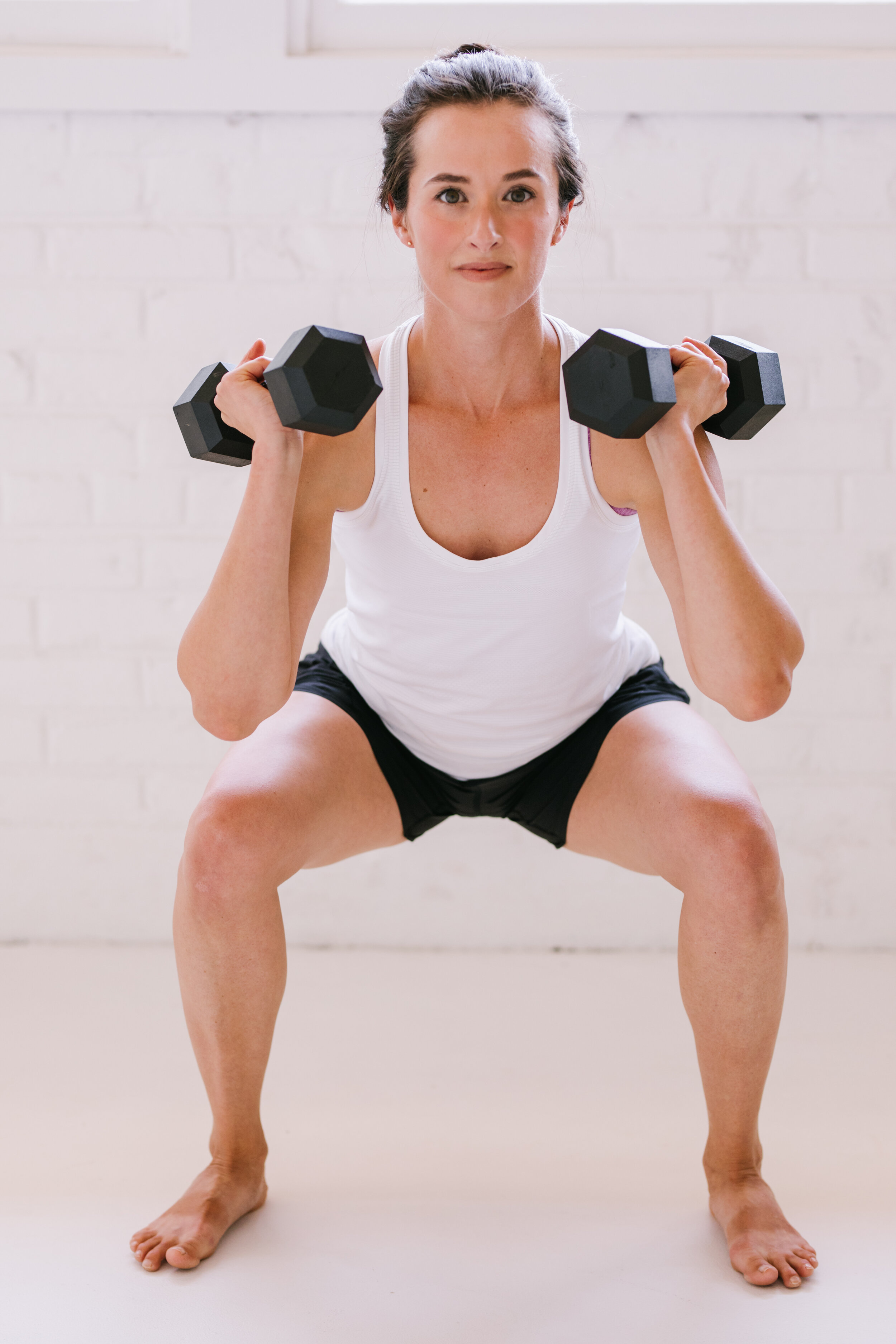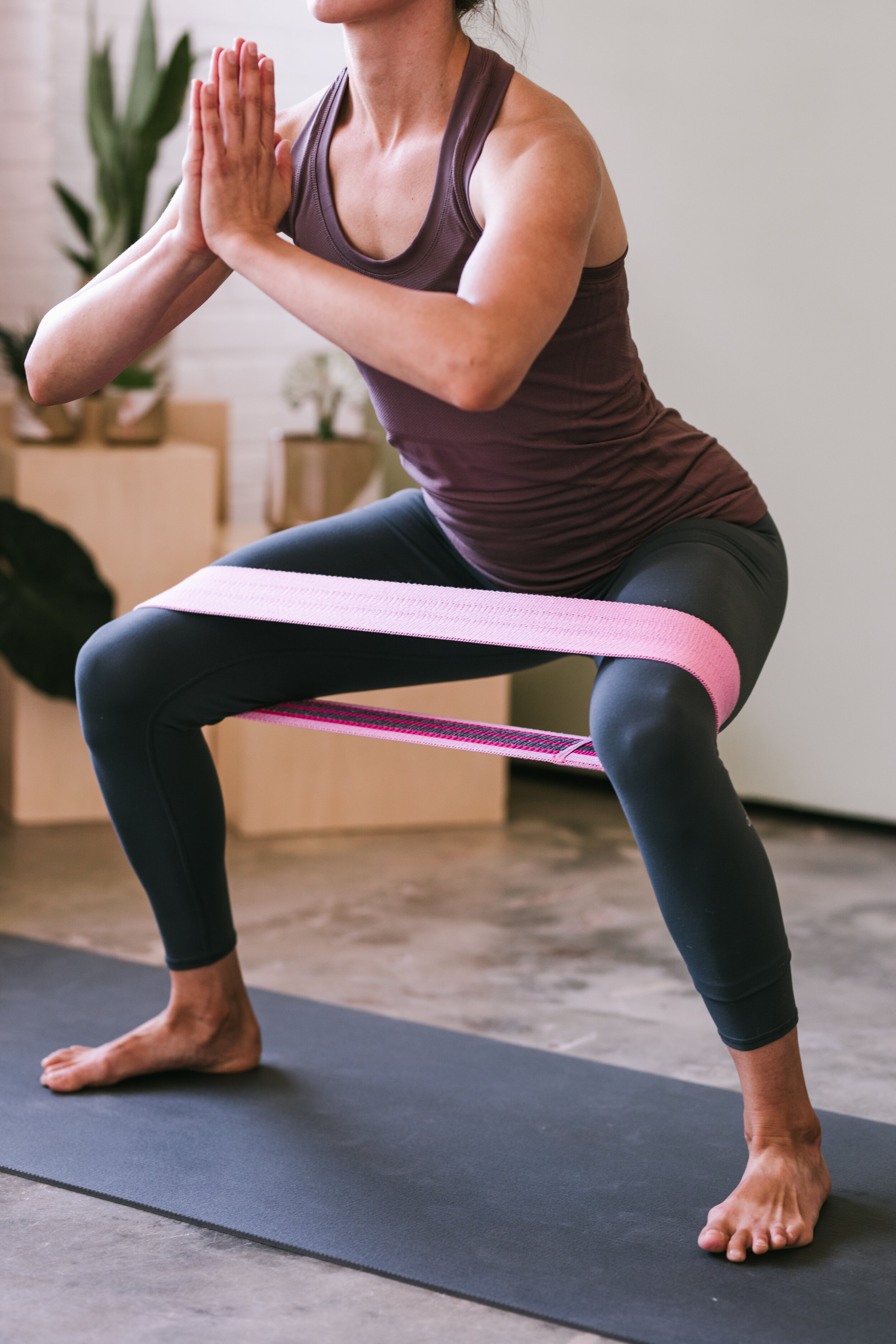5 Tips For The Best At-Home Workouts
There are a lot of reasons why you might be moving your workouts to your homebase. Whatever your motivation is for sweating it out at home, there are a few quick ways that you can make the most of your at-home workouts and stay motivated along the way.
Don’t Skip the Warm-Up and Cool-Down.
Depending on where in your home you’re working out, you might be tempted to jump in and out of movement mode with many other tasks vying for your attention—work email notifications, an upcoming call, the pending invitation to your toddler’s tea party, the dust bunnies you discovered under the couch while doing core work…the list goes on.
No matter how much time you have, give yourself at least a few minutes of warm-up and cool-down movement. Move through all planes of the spine and make sure to connect to your breath. This important part of any movement practice will prepare your body for the demands of your workout by:
Improving circulation to more effectively deliver oxygen and fuel to muscles
Increasing your core body temperature to improve flexibility prevent injury
Giving your mind an opportunity to check-in and settle
Allowing you to scan for anything your body might be trying to communicate
Need a warm-up or cool-down? Check out these 5–10 minute warm-up and cool-down videos.
2. Make a Plan
There is nothing worse than carving out a precious 30 minutes for yourself only to spend half of it searching for a workout or creating your own. Whether it is the night before or in the hours leading up to your sweat session, create a plan. Know what you are going to do before you get started and leave a little wiggle room for adapting to your body’s needs moment by moment. This will help you make the most out of what might be a limited timeframe.
Don’t have time to search for a workout before you get started? Jump in with us any day of the week using the lunae movement calendars for each phase. All you have to do is show up and press play.
3. Invest in a Few Key Pieces of Equipment.
Have you ever found that a new pair of running shoes makes you want to run faster? Or a perfectly fitting sports bra makes you feel like a superhero? When you have the right equipment to support your movement goals, your workouts feel better. You need not furnish a complete home gym or break the bank on the latest and greatest gear. However, a few fundamental pieces of equipment might improve your movement experience and have you looking forward to workouts.
A Good Mat
You will likely use this every time you exercise at home and you want it to support your efforts. So what should you look for in a good mat?
Enough cushion to allow you to kneel or lie down comfortably.
A high-friction surface to keep you in place whether you’re in downward dog or crushing burpees.
Easy maintenance for cleaning and storage. It shouldn’t leave remnants on your floor, crumble under pressure, or smell worse than you do after a workout.
Two Resistance Levels
For at-home resistance workouts, you want to be able to target multiple muscle groups in a wide range of reps without filling your home with dumbbells. Having a set of light and heavy dumbbells will help get the job done. For your heavy set, find a weight that is challenging for lower body movement patterns like squats, deadlifts, and lunges. This will likely be in the 15–35 lb range. You may even go for a single heavy kettlebell instead. When you invest in a heavier set, you can cover your medium weight needs with a single dumbbell. For light weights, find something in the 5-10 pound range that will challenge smaller muscle groups including biceps, triceps, and shoulders without sacrificing mechanics.
Resistance Bands
Resistance bands not only give you a space-saving alternative to weights, but they give you a travel-friendly workout solution that won’t max out your luggage weight limit. We love fabric mini loop bands for glutes and lower body exercises coupled with 1-2 loop bands for the upper body. A single loop band can meet a number of resistance levels through single-sided movements or by doubling the band for greater resistance. This inexpensive addition to your home studio can help you practice good form while giving you access to progressive loading—the resistance naturally increases as the band lengthens. With a bit of creativity, you can add challenge through higher rep ranges that move muscles into fatigue or slower reps that keep targeted muscles under tension.
Yoga Block
Create a more enjoyable yoga experience and explore mobility training safely with these inexpensive and very effective props. A block elevates floor level in yoga practices so that you aren’t tempted to strain as you reach for the ground in poses like triangle or forward bends. The block also serves as a welcome resting place for head and limbs in restorative postures where you might need a little extra support. Interested in upleveling lunges or deadlifts? Use a block to elevate one or both feet and create a new movement pattern—we like sturdy cork blocks for this application!
More Than Movement
A workout ritual can be as simple as clearing a dedicated space for movement. The art of transforming work into ritual can shift your mindset and allow for more effective exercise.
4. Make It a Ritual.
When you create a mindful entry into and out of movement, your workouts become something to look forward to. They are no longer something being done to your body, but something done for your body. A ritual can be as simple as clearing a dedicated space for movement. You might add a houseplant or infuse your workouts with essential oils. Listen to your favorite playlist or tune into the sound of your breath. The art of transforming work into ritual can shift your mindset and allow for more effective exercise. Fresh air and natural light are added bonuses.
At the end of your workout, when you’ve completed the last rep and it’s time to return to your day, make sure you allow for a bit of transition time. This can be a 60 second pause, three very deep breaths, or simply a moment of conscious awareness. Resist the urge to rush from movement back into the world. Close out your movement practice and choose how you want the rest of your day to go. This can create a subtle change in your attitude as you return to work or home life.
A workout journal can be a quick way to track progress and inspire more pathways to your health and fitness goals.
5. Stay Motivated By Tracking Progress
There’s a simple pleasure that comes with crossing items off a to-do list. This symbolic gesture can provide a bit of validation for our productive action and drive. There is a microsecond of relief when we can release the weight of a task knowing it has been completed. Our workouts can provide a similar simple pleasure when we give them a bit of structure or a way to imprint more deeply. A workout journal can be one such method of tracking progress and inspiring more pathways to your health and fitness goals. Again, this one need not consume a lot of your time. Simply jot down the following details at the end of your workout:
Date | Time | Duration
Cycle Day | Phase
Pre-Workout Fuel
Movement Style
Energy Level and Mood
Weight Selection (for resistance training workouts)
When you come back to a particular workout or movement practice, you can refer to the previous experience and acknowledge the ways in which you’ve grown. Sometimes it’s challenging to see our own evolution without a bit of conscious self-reflection.






